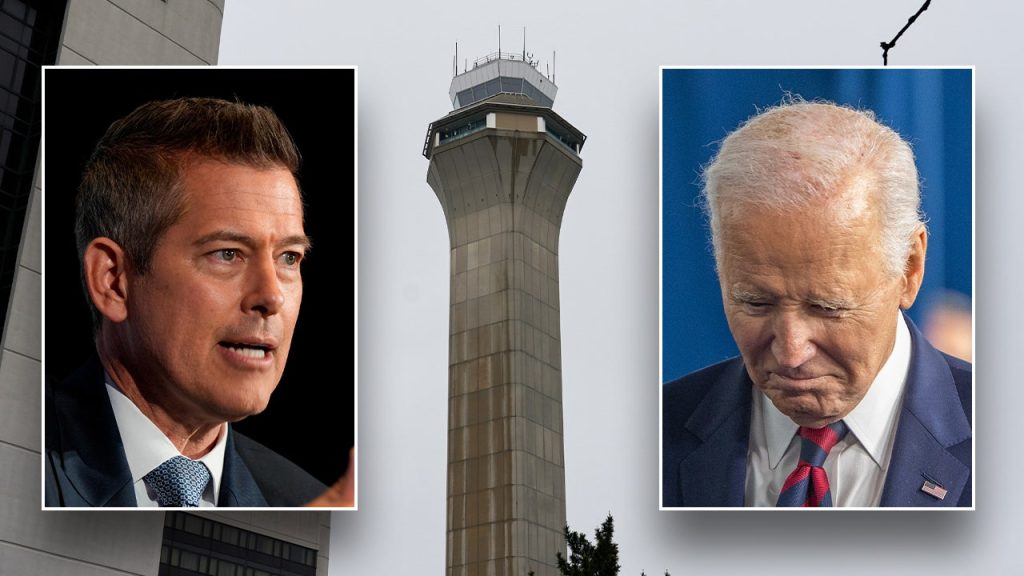Transportation Secretary Sean Duffy has voiced serious concerns regarding the Biden administration’s handling of air traffic control system issues, citing a report from the U.S. Government Accountability Office (GAO). The report, published on September 24, 2024, outlines the urgent need for modernization of an outdated system. Duffy’s criticism comes in light of significant delays and operational failures at major airports, particularly Newark Liberty International Airport, prompting calls for immediate action and accountability.
| Article Subheadings |
|---|
| 1) Overview of the GAO Report on Air Traffic Control |
| 2) Duffy’s Call for System Modernization |
| 3) Recent Air Travel Chaos in Newark |
| 4) Legislative Measures Under Consideration |
| 5) Implications for Future Air Travel Safety |
Overview of the GAO Report on Air Traffic Control
The U.S. Government Accountability Office (GAO) released a report that provides critical insights into the state of the Federal Aviation Administration’s (FAA) air traffic control systems. The document, titled “Air Traffic Control: FAA Actions Are Urgently Needed to Modernize Aging Systems,” highlights the administration’s apparent inaction in addressing systemic failures. As of May 2024, the report indicated that 17 systems within the FAA were deemed particularly concerning due to factors such as age, operational impact, and the urgency for modernization. The GAO called attention to the slow pace of updates, which could have far-reaching implications for air traffic safety.
Duffy’s Call for System Modernization
During discussions about the GAO report, Secretary Duffy highlighted his concerns on social media platforms, asserting that the Biden administration had ignored these urgent warnings regarding the failing air traffic system. He pointed out that ongoing discussions with President Donald Trump revolve around creating an entirely new air traffic control system that would set a new global standard. Duffy’s assertion emphasizes that the current administration had knowledge of the deteriorating state of the FAA systems while simultaneously failing to take necessary action. His comments reflect a broader sentiment among officials that America’s airspace management infrastructure is in dire need of modernization.
Recent Air Travel Chaos in Newark
Recent issues at Newark Liberty International Airport further emphasize the urgency of addressing air traffic control shortcomings. The airport, a major hub in the New York metropolitan area, has experienced significant operational disruptions, including hundreds of delays and cancellations. These disruptions coincide with a critical report indicating that FAA air traffic controllers in Philadelphia lost both radar and radio signals while guiding planes. Such failures underscore the pressing need for immediate and comprehensive improvements to the air traffic control system to enhance safety and efficiency.
Legislative Measures Under Consideration
In response to these alarming developments, Secretary Duffy has announced plans to introduce legislation aimed at modernizing the air traffic control infrastructure. He indicated that this proposal would seek comprehensive changes to enhance system reliability, ensuring that the safety of the national airspace is prioritized. Duffy has noted that his push for modernization stems from a realization that the current infrastructure is not just aging in portions but is fundamentally flawed across the board. He has expressed determination to advocate for legislative measures that would allocate the necessary resources for a complete overhaul of the system.
Implications for Future Air Travel Safety
The findings from the GAO report, coupled with the recent incidents affecting air traffic, point to significant implications for the future of air travel in the U.S. If the situation continues to go unaddressed, it could result in increasing incidents of operational chaos similar to what has recently occurred in Newark. Experts argue that without timely action, the safety and reliability of air travel could be compromised, adversely impacting not just passenger experience but also the broader aviation industry. Stakeholders across the board are now calling for decisive action to avert potential disasters stemming from an outdated air traffic control system.
| No. | Key Points |
|---|---|
| 1 | U.S. Government Accountability Office alerts need for immediate action on FAA air traffic control systems. |
| 2 | Secretary Duffy criticizes the Biden administration for neglecting significant reports on the FAA. |
| 3 | Newark Airport’s operational disruptions serve as a focal point highlighting the urgency of the situation. |
| 4 | Duffy is set to introduce legislation aimed at modernizing the air traffic control system. |
| 5 | Experts warn that inadequate action may jeopardize future air travel safety and reliability. |
Summary
The revelations surrounding the inadequacies within the FAA and the air traffic control systems have amplified ongoing discussions about the necessity for modernization. Secretary Duffy’s critical remarks highlight concerns that have now gained urgency amid operational failures at key airports. The impending legislative measures aim to tackle these systemic issues, reflecting a growing consensus on the need for a comprehensive and proactive approach to air safety.
Frequently Asked Questions
Question: What are the main issues identified in the GAO report?
The GAO report highlights several aging systems within the FAA that require urgent modernization, indicating that 17 systems are particularly concerning for operational safety.
Question: What actions has Secretary Duffy proposed to address these air traffic problems?
Secretary Duffy has announced plans to introduce legislation aimed at modernizing the air traffic control infrastructure, emphasizing the need for a complete overhaul of the current aging systems.
Question: How do recent events at Newark Liberty International Airport relate to the report’s findings?
Recent operational disruptions at Newark Airport, characterized by delays and lost signals by air traffic controllers, underscore the urgency of addressing the systemic issues noted in the GAO report regarding the FAA’s air traffic control systems.


